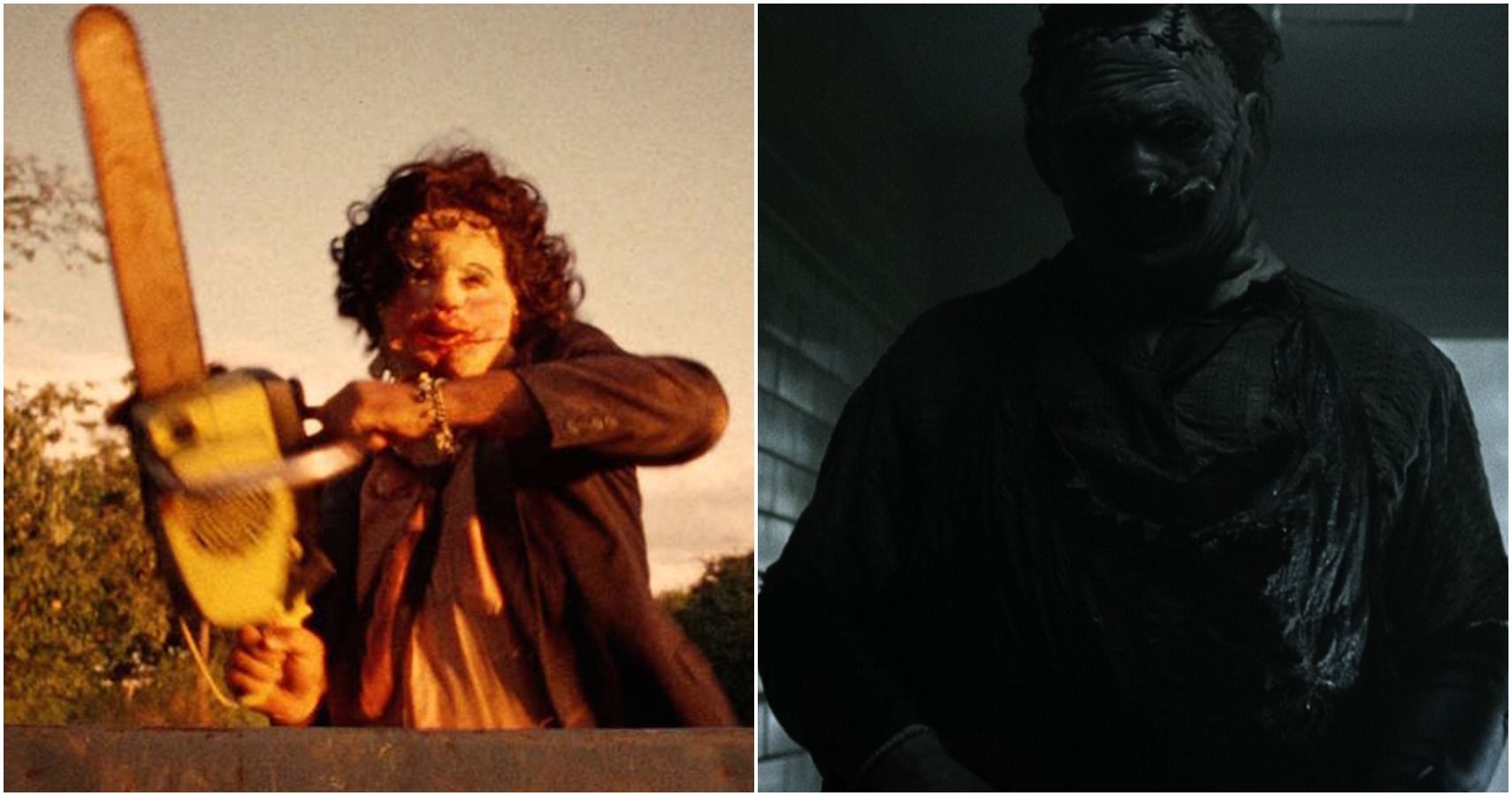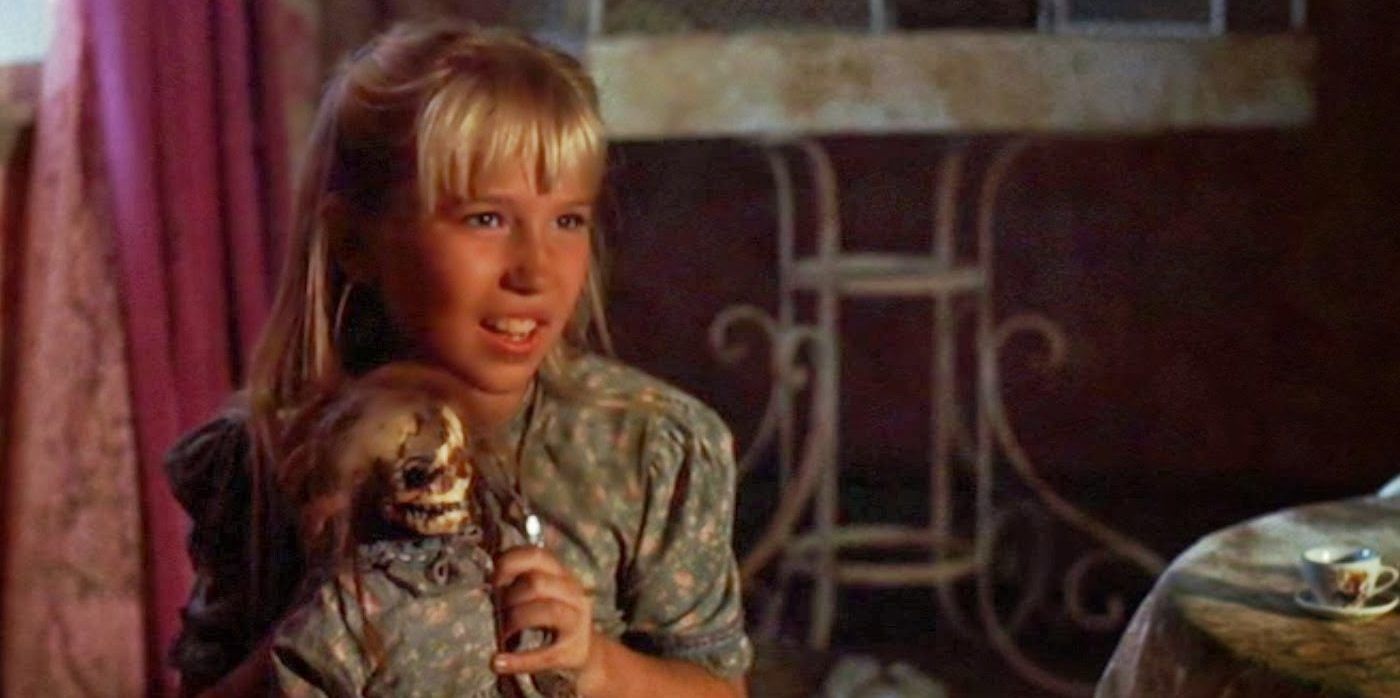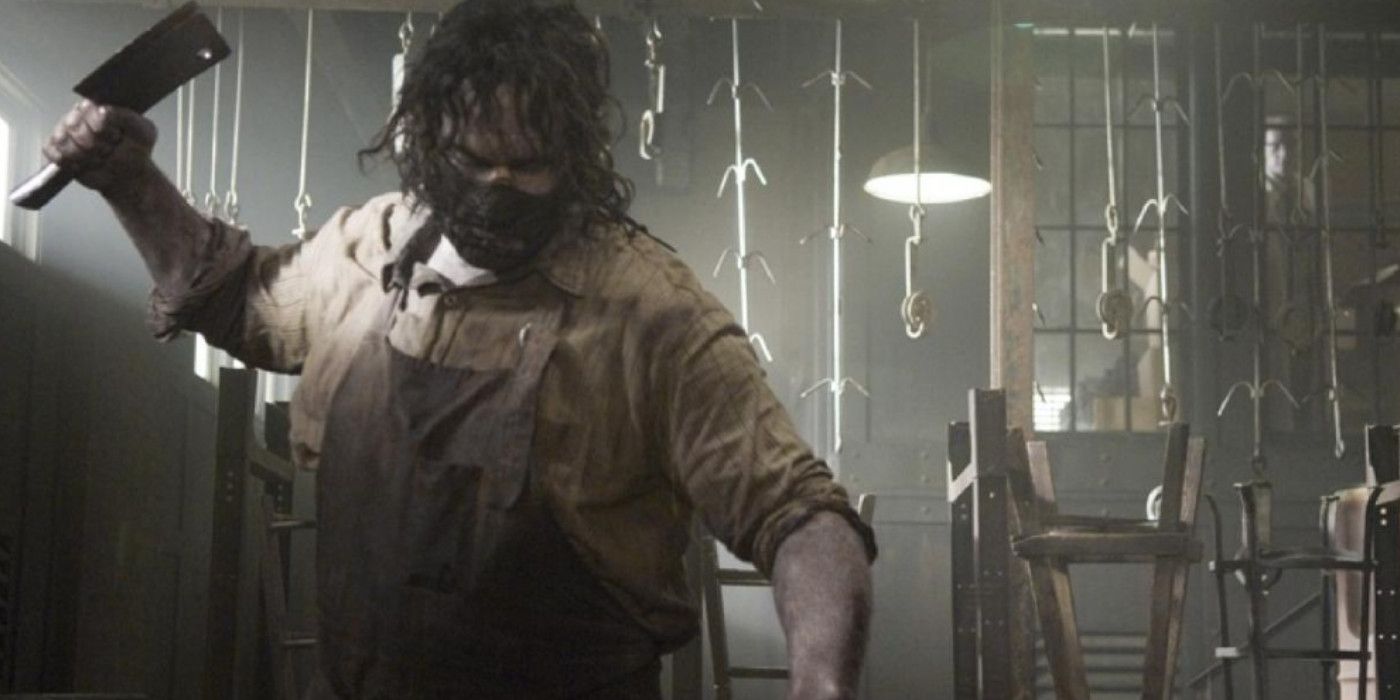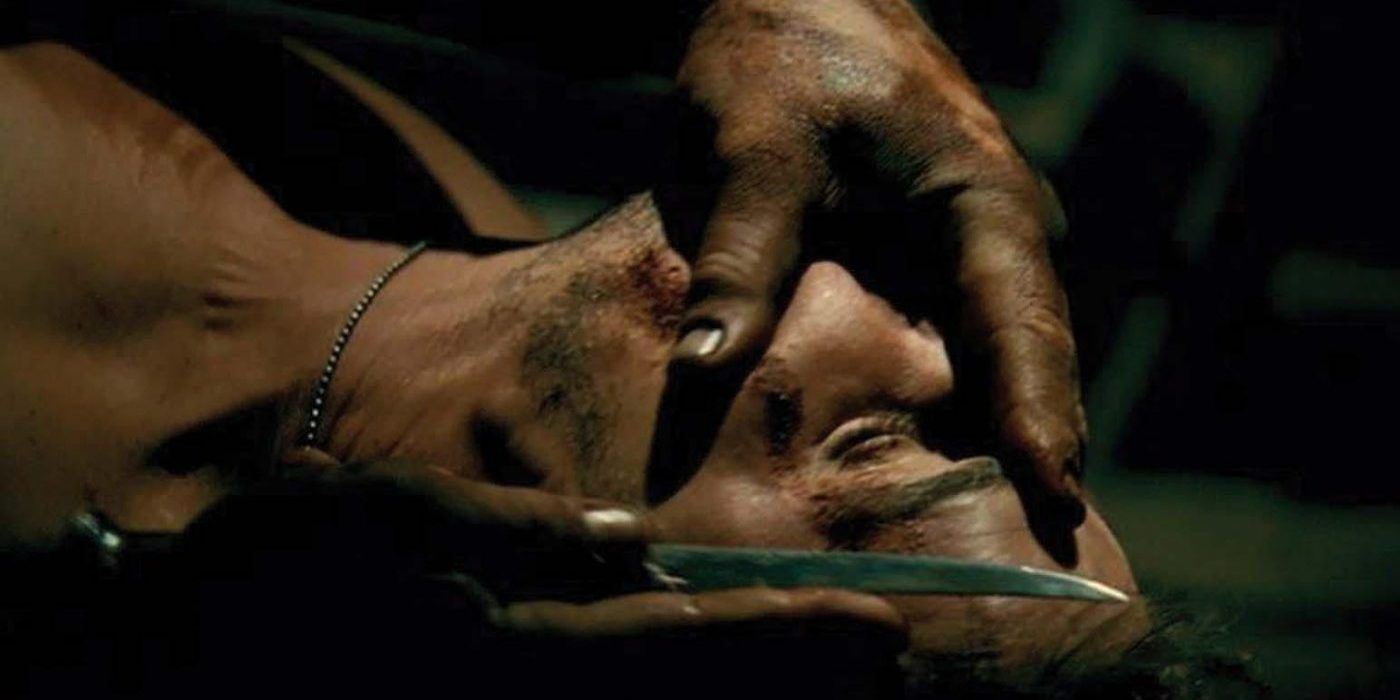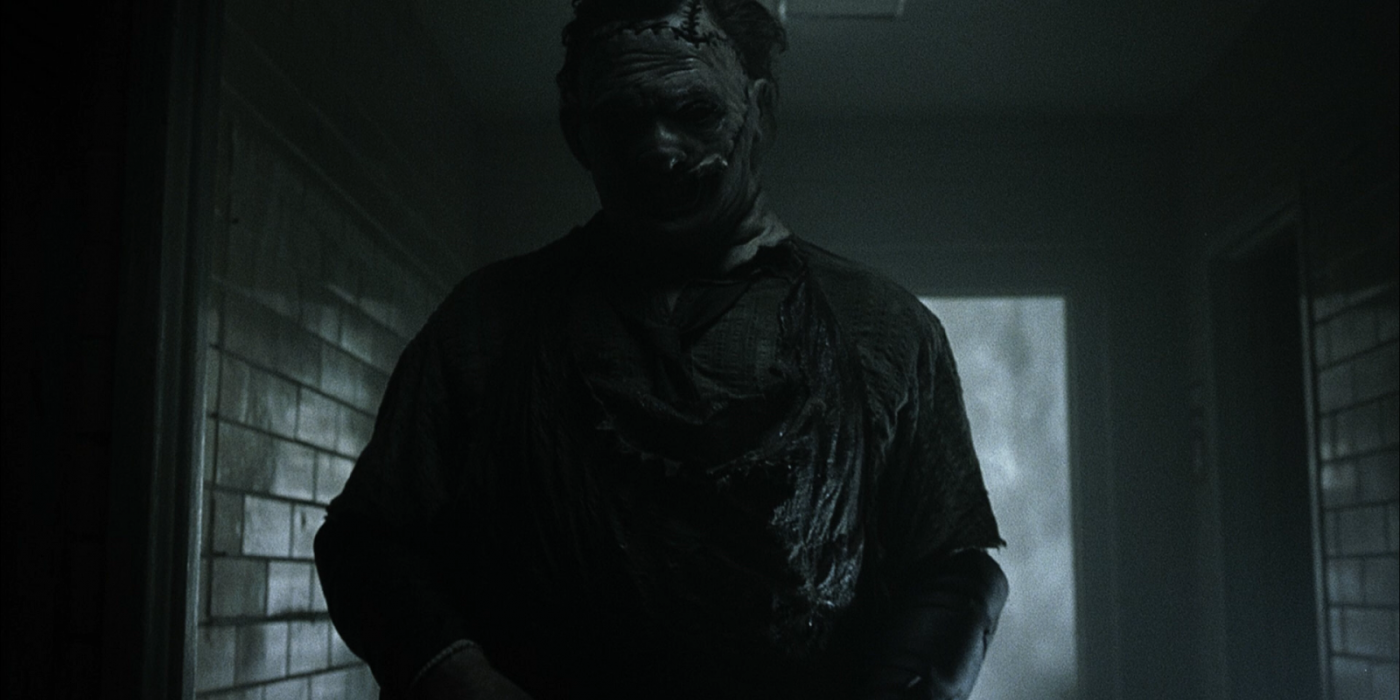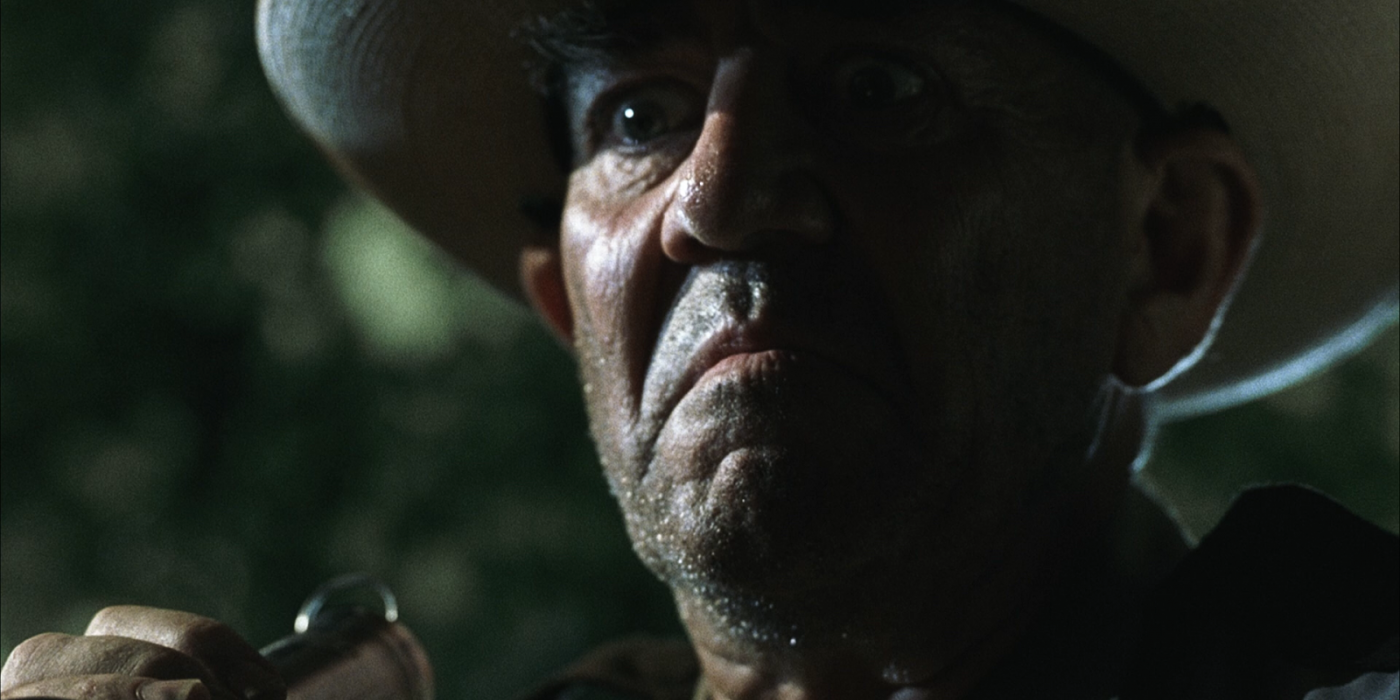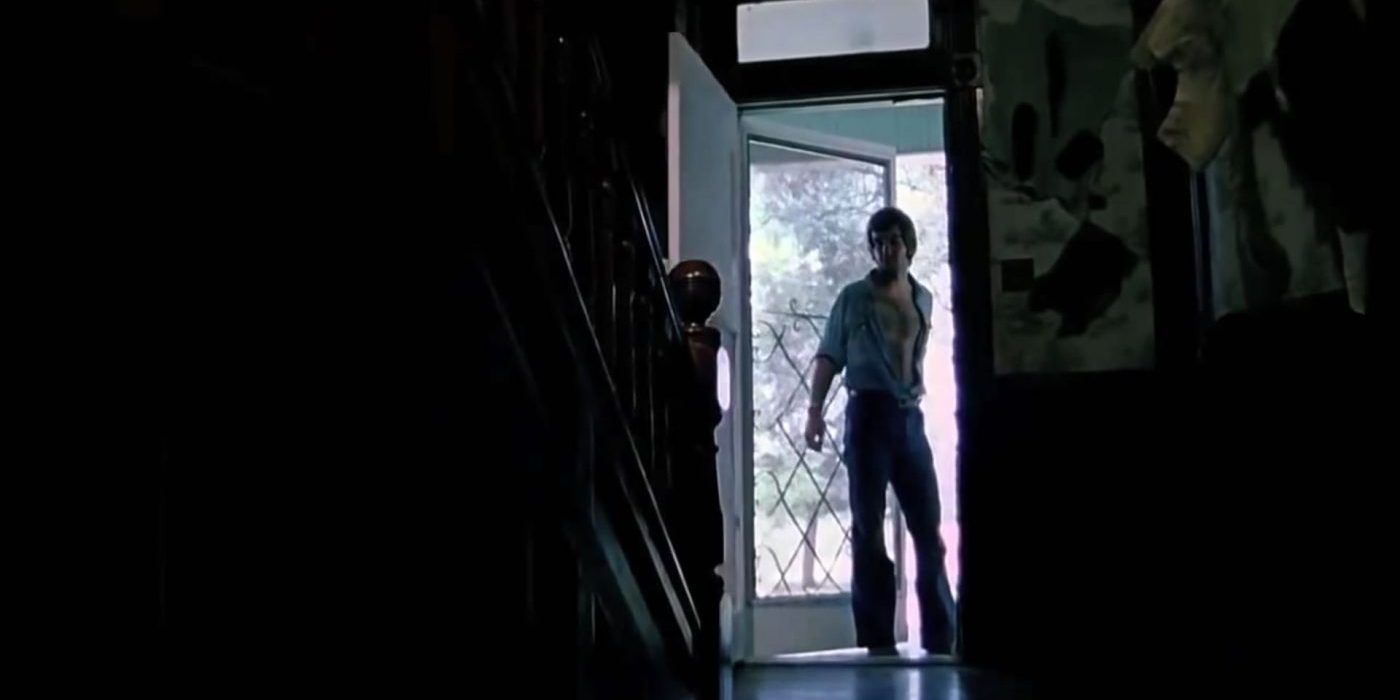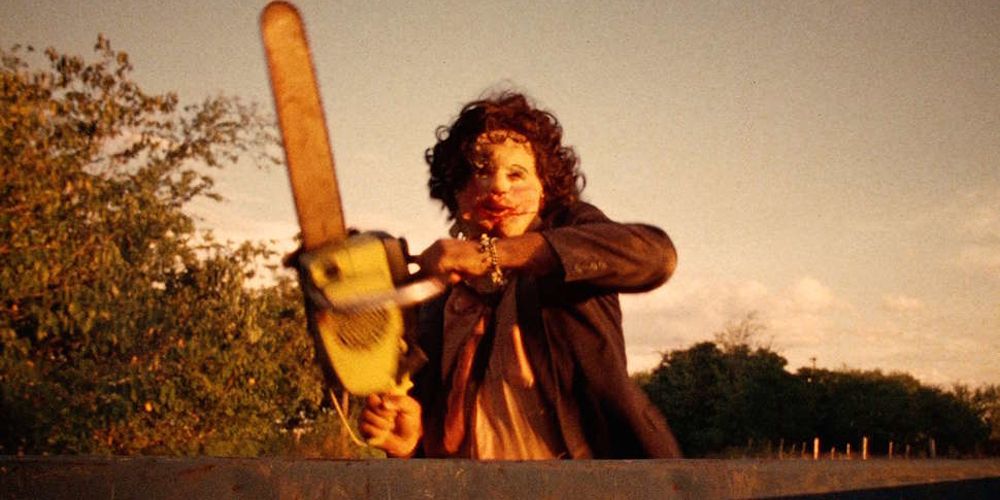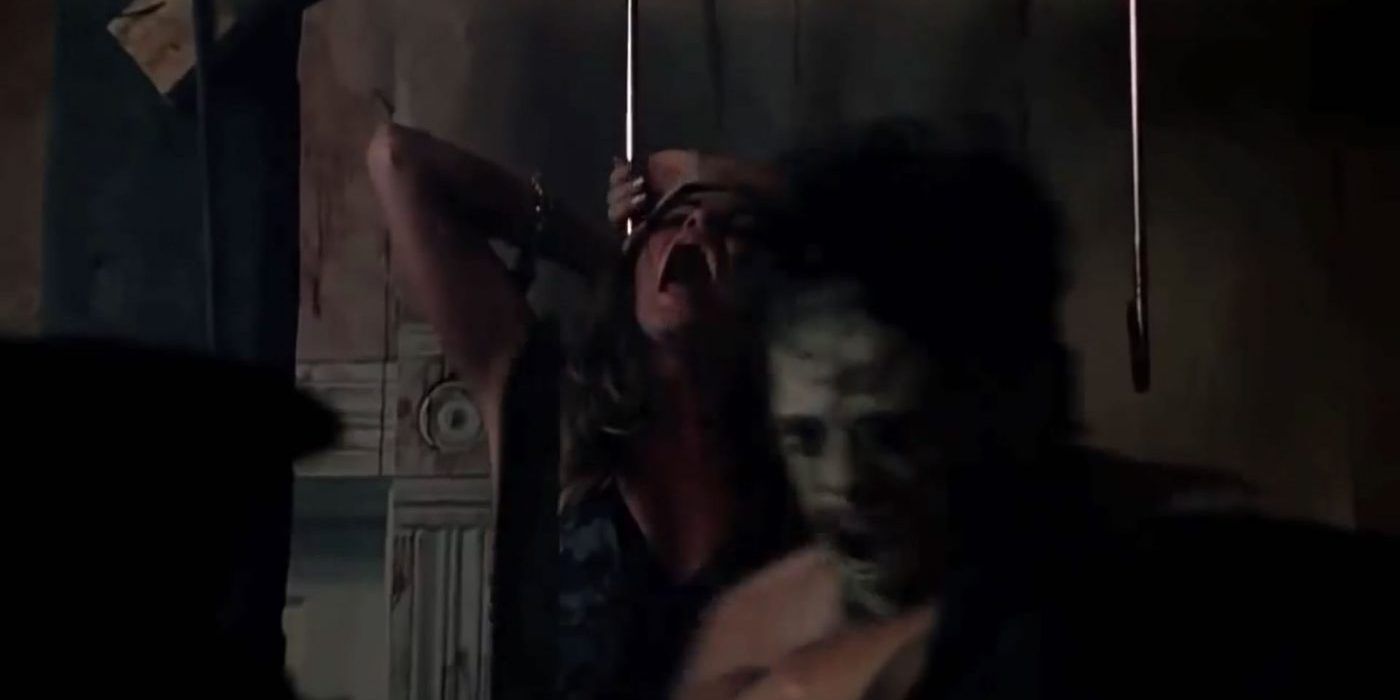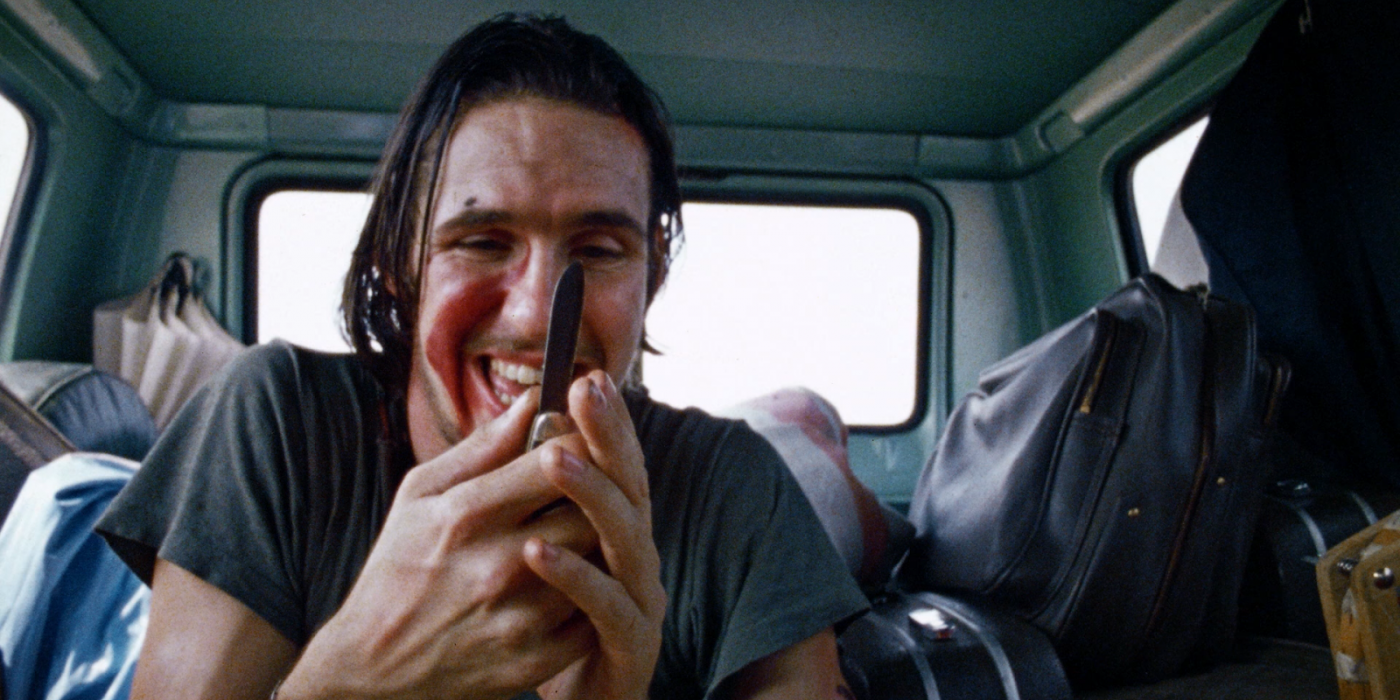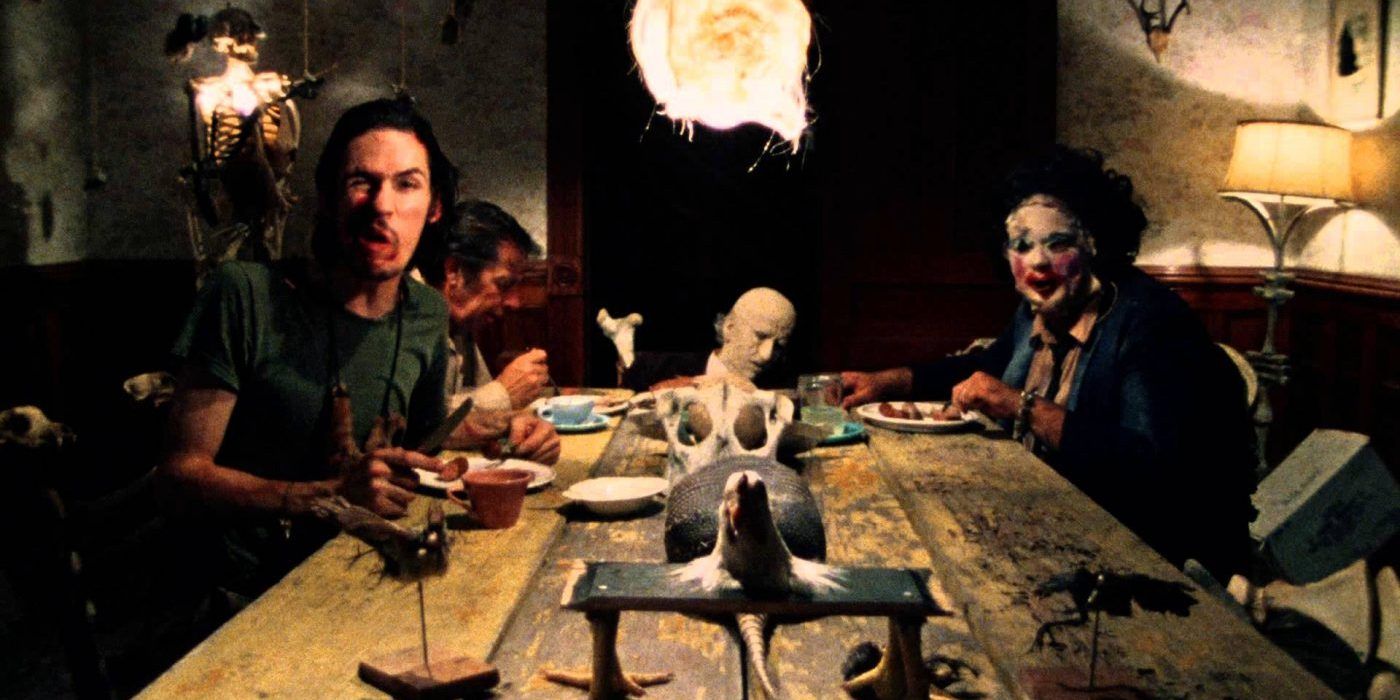The entirety of the Texas Chainsaw franchise is built on the shoulders of the original. So, this will predominantly be a celebration of that original entry, which deeply contributed to subsequent slasher fare. Its cinema verite style is especially disconcerting, even opening with a false declaration of truth in its plot.
The social commentary was blatant but intriguing, and the horror was terrifying despite avoiding serious bloodshed and gore. The first sequel leaned into a dark comedy, rendering any actual fear impossible. It even went so far as to borrow The Breakfast Club poster for its marketing. But certain scares in subsequent installments proved to be surprisingly effective.
Leatherface: Texas Chainsaw Massacre III - Sledgehammer
It’s strange to imagine Viggo Mortensen, of Lord of the Rings fame, in this sub-par horror sequel. True, the film made some attempt to careen the franchise back into actual horror. But there were still ludicrously silly moments, like the Excalibur-style chainsaw.
Which Leatherface never really uses. However, the film becomes unexpectedly dark when Mortensen’s character threatens a protagonist with Leatherface’s rape. It implies the little girl in the film might be Leatherface’s daughter. Worse, the girl murders ‘Ryan’ with a sledgehammer and feeds his blood to her grandpa. By her sheer age, this is far more disconcerting than the exploitative depravity seen elsewhere in the series.
The Texas Chainsaw Massacre: The Beginning - Doomed
The reboot of the original horror classic is actually regarded as one of the few successful reimaginings in horror. Of which there have been plenty, most of which are noted in Scream 4. The casting of R. Lee Ermey was certainly brilliant, and he ultimately delivers the same talent in this entry, too. He really carries the film, though Jordana Brewster offers enough as the lead.
While this prequel to the 2003 reboot isn’t half as effective, there’s more to enjoy here above many other installments. The final minutes actually muster urgency, despite their inevitability. Chrissie hides in a bloody pool, and those quieter moments are always most affecting. But Dean’s death has genuine verve to it, as Leatherface brutally stabs and tosses him aside.
The Texas Chainsaw Massacre: The Beginning - First Mask
This is arguably the most compelling horror in the film and the best scene outside of Ermey’s performance. Brewster’s protagonist Chrissie must remain in hiding, directly beneath her boyfriend, as Leatherface murders him. Brewster sincerely sells the tragedy, and Chrissie is nearly wounded by the chainsaw herself. Further, the sequence also depicts the creation of Leatherface’s first face-mask.
Which has always been his most disturbing attribute, given its similarity to real-life serial killer Ed Gein. Anyone watching this prequel would only do so if they were interested in such reveals. Although some feel superfluous, the face-mask is gruesome but essential.
The Texas Chainsaw Massacre - Slaughterhouse
Thanks to its invaluable fidelity to the original’s tone and imagery, this reboot succeeded where many have failed. True, it may have studio gloss, abandoning the grainy, documentary-style of the original and incorporating a pumping Steve Jablonsky score. But the original’s cinematographer, Daniel Pearl, returns to sustain an atmosphere of gloomy dread.
Including the controlled gore, the few changes in this 2003 reboot are largely effective. The finale’s desperate chase through the slaughterhouse balances suspenseful hiding and exhilarating bouts with Leatherface. The hanging pigs and the cold are oppressive, and the locker-strategy is actually rewarding. Also, the much-discussed slaughterhouse in the franchise is finally explored.
The Texas Chainsaw Massacre - Suicide Reenactment
This is probably the pinnacle of R. Lee Ermey’s contribution to the franchise. Near the beginning of the film, a girl commits suicide in the back of the protagonists’ van. Later on, Ermey’s demented Sheriff Hoyt forces one of them to recreate the situation.
Isolated in the night, Ermey’s hostile coercion is far more unsettling than your typical Leatherface foot-chase. Ermey’s personality is uniquely disturbing, and the tension is acquired through insinuation rather than outright, boisterous horror. The overwhelming sense of depraved glee, particularly coming from an apparent authority figure, is easy to fear.
The Texas Chainsaw Massacre - First Leatherface
Much of the original film is superior not just by artistic execution, but also its innovative novelty. Ideally, horror fans could watch the original entry first. The slow revelations throughout the film, regarding the twisted extent of the horror in Leatherface’s home, are all shocking.
And the first reveal of the iconic Leatherface, repeatedly hammering Kirk to death, should be difficult to top. However, it is also deliberately abrupt, reducing suspense. This is still decidedly horrifying, though, thanks to the confusing image and realistic brutality. Further, the scene ends with that classic shot of Leatherface coldly slamming a sliding door.
The Texas Chainsaw Massacre - Final Girl
The extreme level of desperation accumulated throughout the film culminates with Sally’s final escape attempt. After one of the most disconcerting sequences in the entire horror genre, this chase is immensely cathartic. Sally flees the house with Leatherface and the opening’s hitchhiker in hot pursuit. Even after all their torture, the hitchhiker still slashes Sally’s back, until she reaches the road.
Absolute chaos ensues, as two random passersby get involved. The window of escape is so narrow, the struggle is amplified. Further, everything is set in the morning daylight, unexpectedly showcasing the horror in full view. The camerawork is impeccable, the cinematography is engaging, and the showdown is remarkably exciting.
The Texas Chainsaw Massacre - Pam’s Hook
The increasingly warped indications of psychological instability are tremendously frightening. Pam’s death begins with an iconic longshot, slowly following her into the house. Suspense only escalates after Pam trips into a room full of bones. The set design is so creatively thorough and bizarre, with a couch that delivers nightmare fuel all day long.
The camera swivels around, capturing an immersive sense of dizziness and claustrophobia, which envelops Pam. Alongside her, we are disgusted into paralysis. And so proceeds the agonizingly slow, flailing journey to the meat hook. This concept has become so iconic, it even appeared in the video game Dead by Daylight.
The Texas Chainsaw Massacre - Hitchhiker
Mental instability is historically difficult to perform convincingly, because of the fine line before silliness or even offense. However, there’s no denying the credible, unnerving and anti-social behavior of the hitchhiker. His blatant interest in violence, including self-injury with a knife, and his increasingly aggressive attitude are frightening by implication.
The suspense is heightened by its juxtaposition with cheerful music, and the attack on the wheelchair-ridden protagonist is a horrifying payoff. Instead of the impending grotesque imagery, this scene is terrifying because the compelling performances garner escalating tension throughout. It establishes tone and lore, effectively promising the nightmare yet to come.
The Texas Chainsaw Massacre - Dinner
There are few scenes in the horror genre so genuinely disturbing. Marilyn Burns’ performance as Sally is nothing less than extraordinary. She sells every inch of mania and desperation, alternating between tragic pleading and rattling wails. The entire sequence feels utterly primal and immersive, as the camera tightens in for increasingly cramped shots.
With extreme close-ups of Sally’s eye, overlayed animal sounds, and fierce editing, this scene is absolutely historic. The cannibals’ in-fighting, laughter, and awful mocking of Sally’s cries are truly potent and distressing. The situation only worsens when Sally is subjected to the grandfather, whose weakened state prolongs the attempt to finish her off. The dinner scene is replicated in sequels and other horror, a perfect representation of this film’s capacity for compelling psychological torment.

